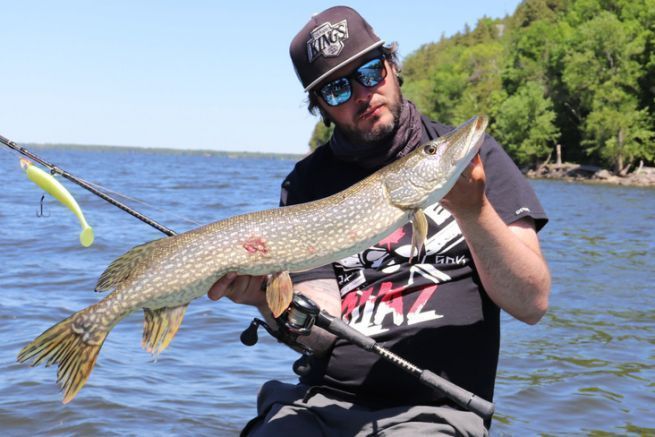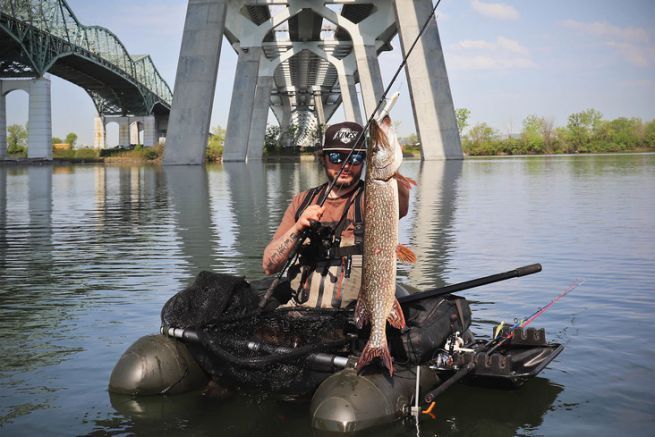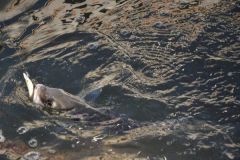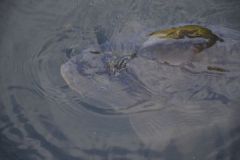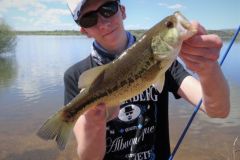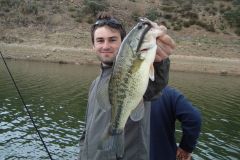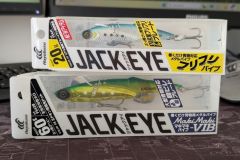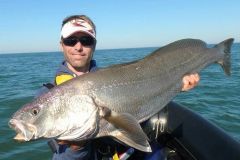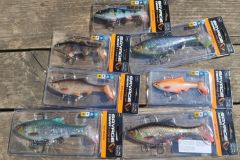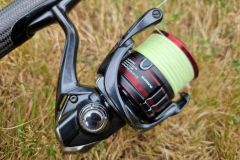Lake Champlain
Lake Champlain is a large lake which stretches over a hundred kilometers in length. It straddles the United States where most of its surface is located, and the Canada .
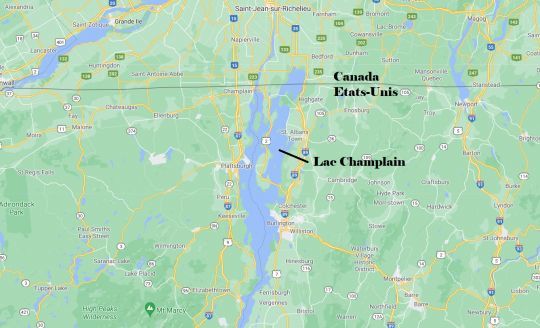
Fishing
As explained in the previous article, at this early stage of the season, pike are difficult to locate, but they seem to be getting closer to the edges as the days go by. The lake we fished is very large, with no real marked spots. The bottom is a gentle slope of rock. In these conditions, the idea is to beat as much ground as possible to find active fish, to try to understand their behavior and the areas they like. After several catches, we noticed that the fish seemed to dull in an area between 2 and 3 meters deep.
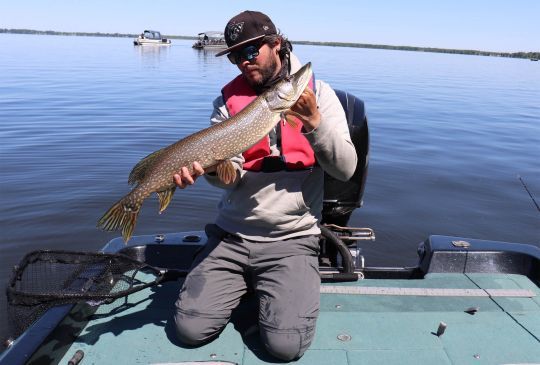
To meet this need for wide-ranging prospecting, I've opted for 2 approaches. The first is to fish with hard swimbaits, which will bring me a few fish, but above all a lot of tracking. The second approach is to fish with a big soft lure, in a more erratic way, and this is much more effective in triggering bites.
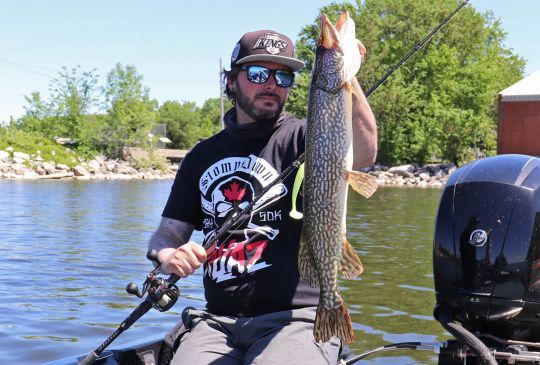
The lure
As for the soft lure that has brought me the most success, I use a Lunker City Shaker in size 6 inches. It's mounted on a 14-gram lead head with 2 attachment rings. I use the first ring to attach it to the line and the second to attach the stinger. I find the shallow mounting, with the screw at the head, unsuitable for this lure, so I prefer to mount it on a lead head, which gives it structure and keeps it upright, while retaining a wide swimming action in its last 2 thirds.
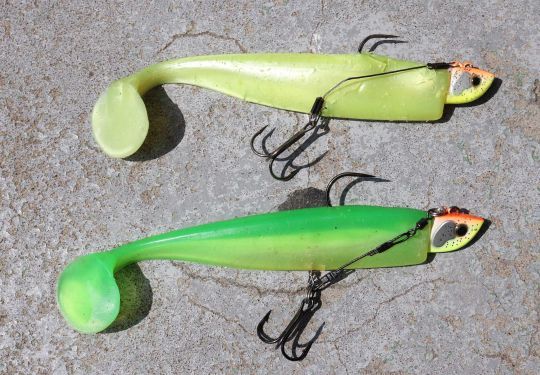
The top rig is the old version. From now on I use a stinger similar to those used for Shallow Rig rigs for their ease of disassembly and the fact that they damage the lure less.
Animation
Finally, the animation I like best is the "sawtooth" one, characterized by alternating phases of wide pulls when the lure rises up the water column towards the surface, and releases when the lure sinks back down into the water layer. Most of the time, the attack takes place as the lure descends, so you need to be sure to accompany the lure during this phase, with the banner slightly taut. For this exercise, I'm particularly fond of the Shaker mounted in this way, as its high, narrow profile allows the lure to split the water properly during the pulling phase, while its wide tail, in addition to emitting strong vibratory signals (which is important for prospecting large environments), will slow the lure's descent during the release phase.

 /
/ 